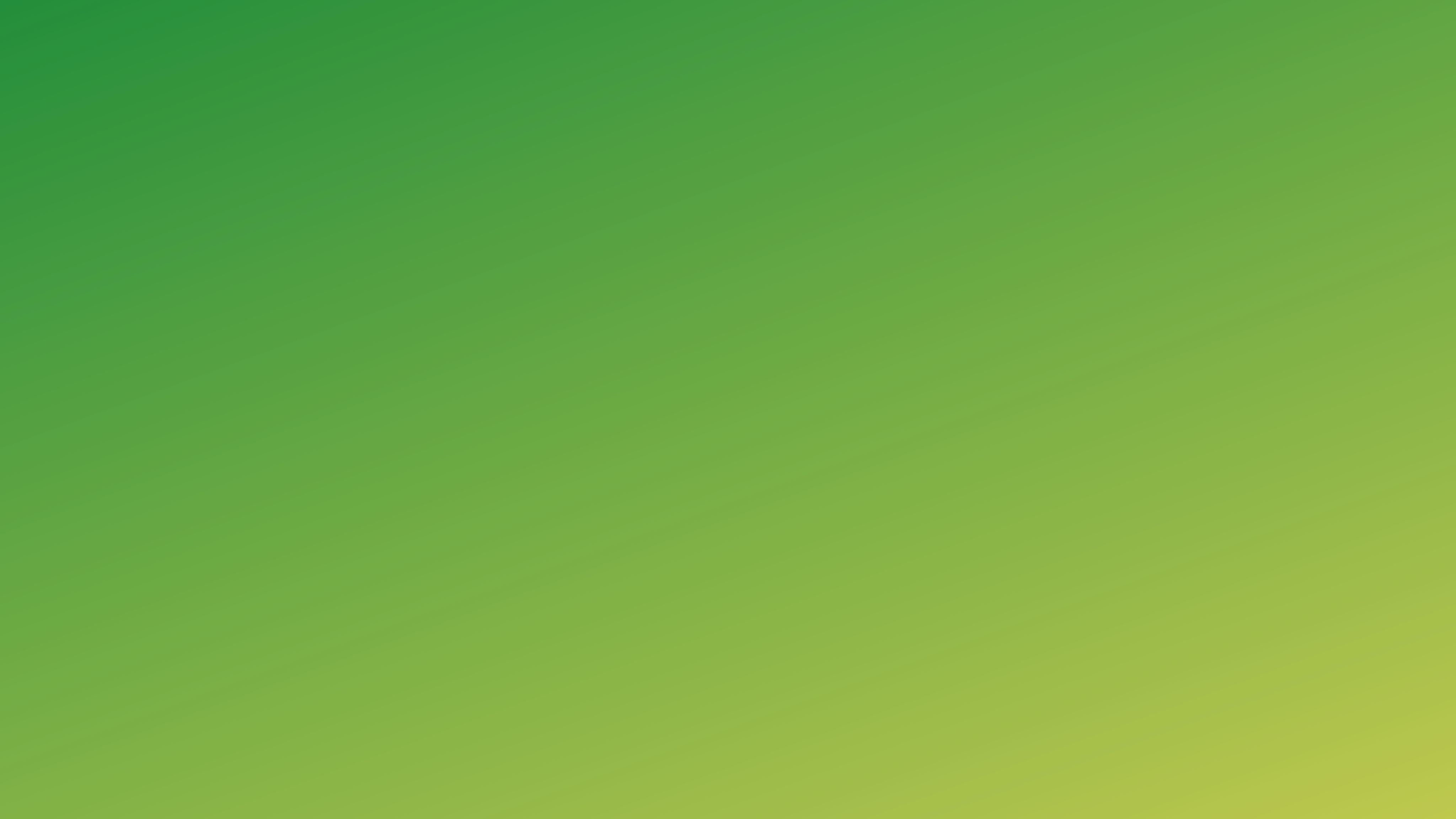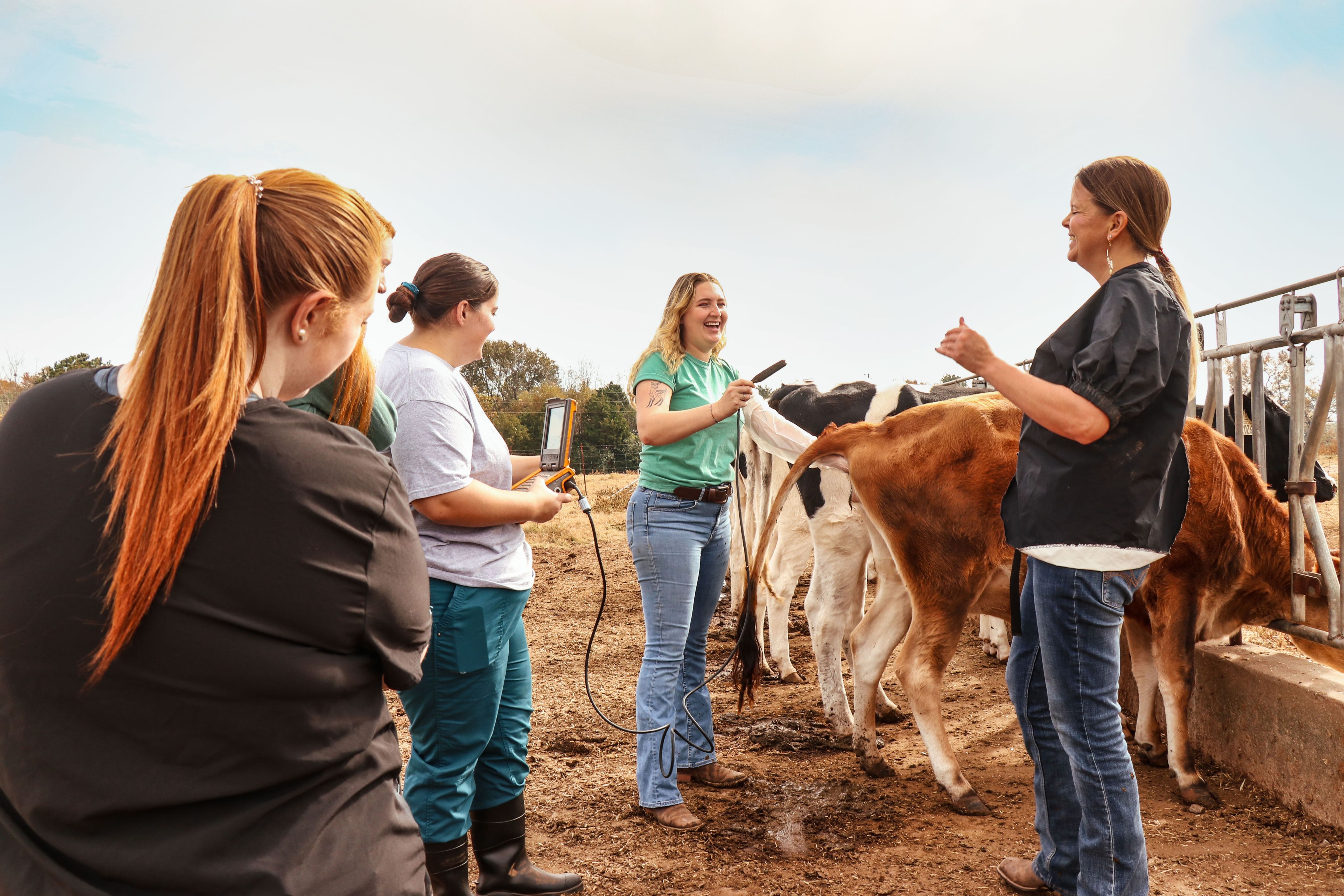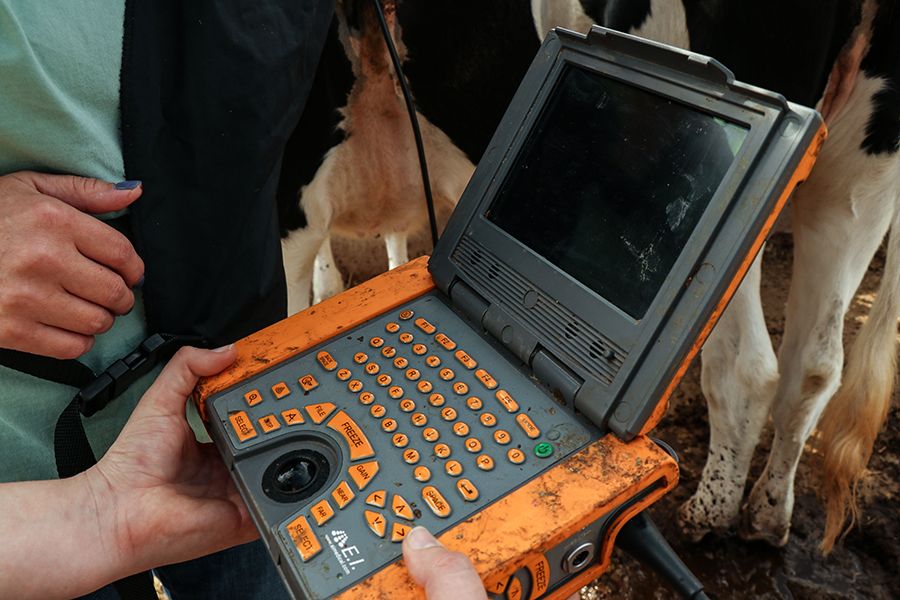Herd Mentality
The Jersey Management by Students program at CAES equips animal and dairy science majors with high-value skills in livestock breeding
moo!

moo!
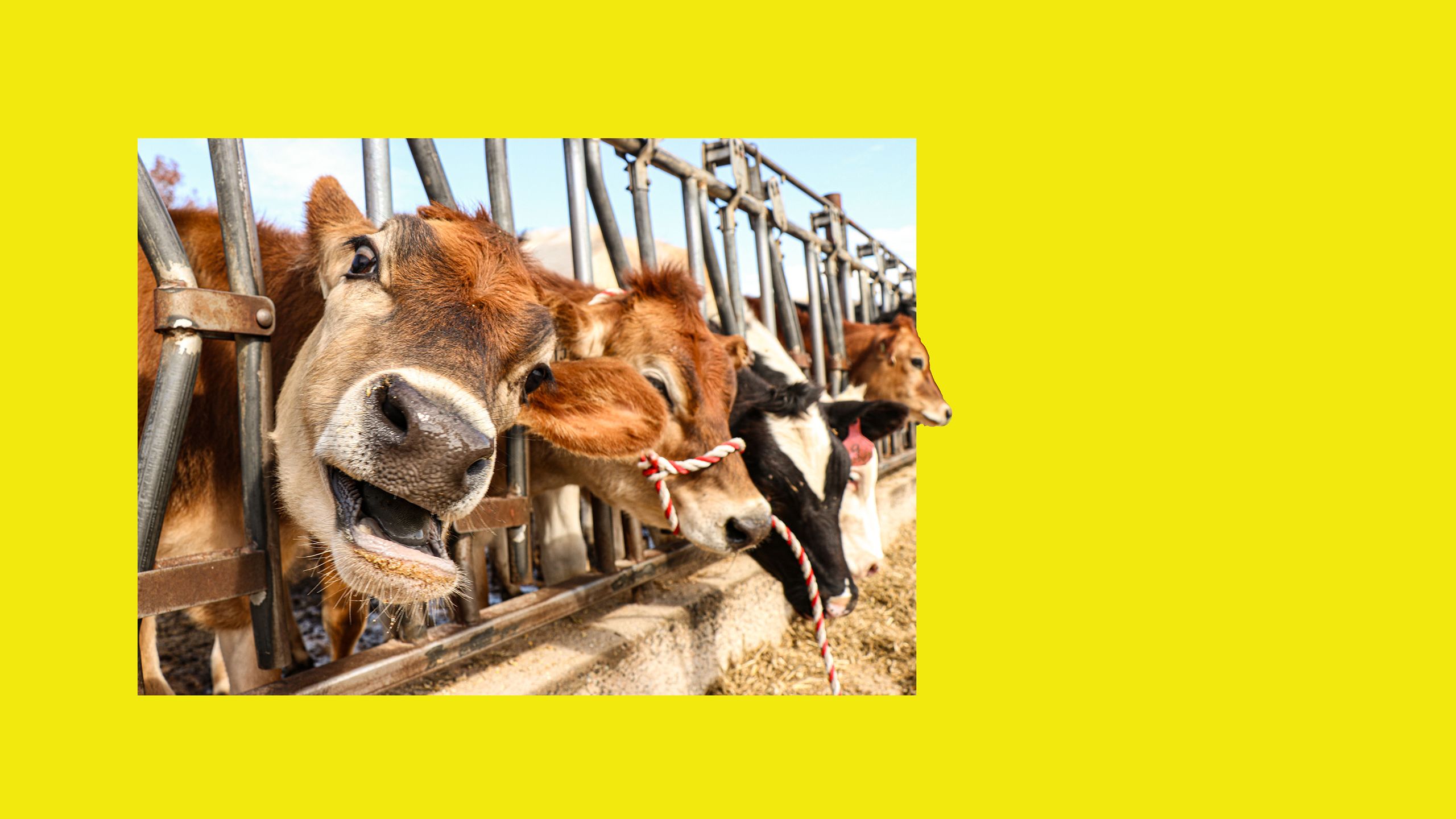
In November 2023, Bohlen and four undergraduate students checked young heifers for pregnancy and took genetic samples at the UGA Teaching Dairy in Winterville, Georgia. Bohlen instructs fourth-year student Sophie Du Pont on how to conduct a pregnancy check on a Jersey heifer as Bekah Stewart, Kayleigh Smith and Audrey Mixon observe.
In November 2023, Bohlen and four undergraduate students checked young heifers for pregnancy and took genetic samples at the UGA Teaching Dairy in Winterville, Georgia. Bohlen instructs fourth-year student Sophie Du Pont on how to conduct a pregnancy check on a Jersey heifer as Bekah Stewart, Kayleigh Smith and Audrey Mixon observe.
Slipping on a shoulder-length plastic glove, fourth-year animal and dairy science student Sophie Du Pont prepared to perform a pregnancy ultrasound on a 16-month-old Jersey heifer named Woof at the University of Georgia Teaching Dairy in Winterville, Georgia.
Having carefully watched animal and dairy science Associate Professor Jillian Bohlen perform the procedure on several Holstein heifers just minutes before, Du Pont maneuvered the ultrasound transducer to coax a clear digital image onto the portable computer screen connected to the scanning device.
It took a few moments to capture a distinct glimpse of the fetus nestled in its mother’s uterus, led by gentle direction and encouragement from Bohlen and under the intent gazes of her teammates in the Jersey Management by Students (JAMS) team.
“There it is!” Bohlen exclaimed as the image resolved itself on the screen, confirming a successful breeding by artificial insemination. At those words, Du Pont’s face broke into a delighted smile as her team crowded around the monitor to get a better look at the newest member of the soon-to-be next generation of Jersey cows at UGA.
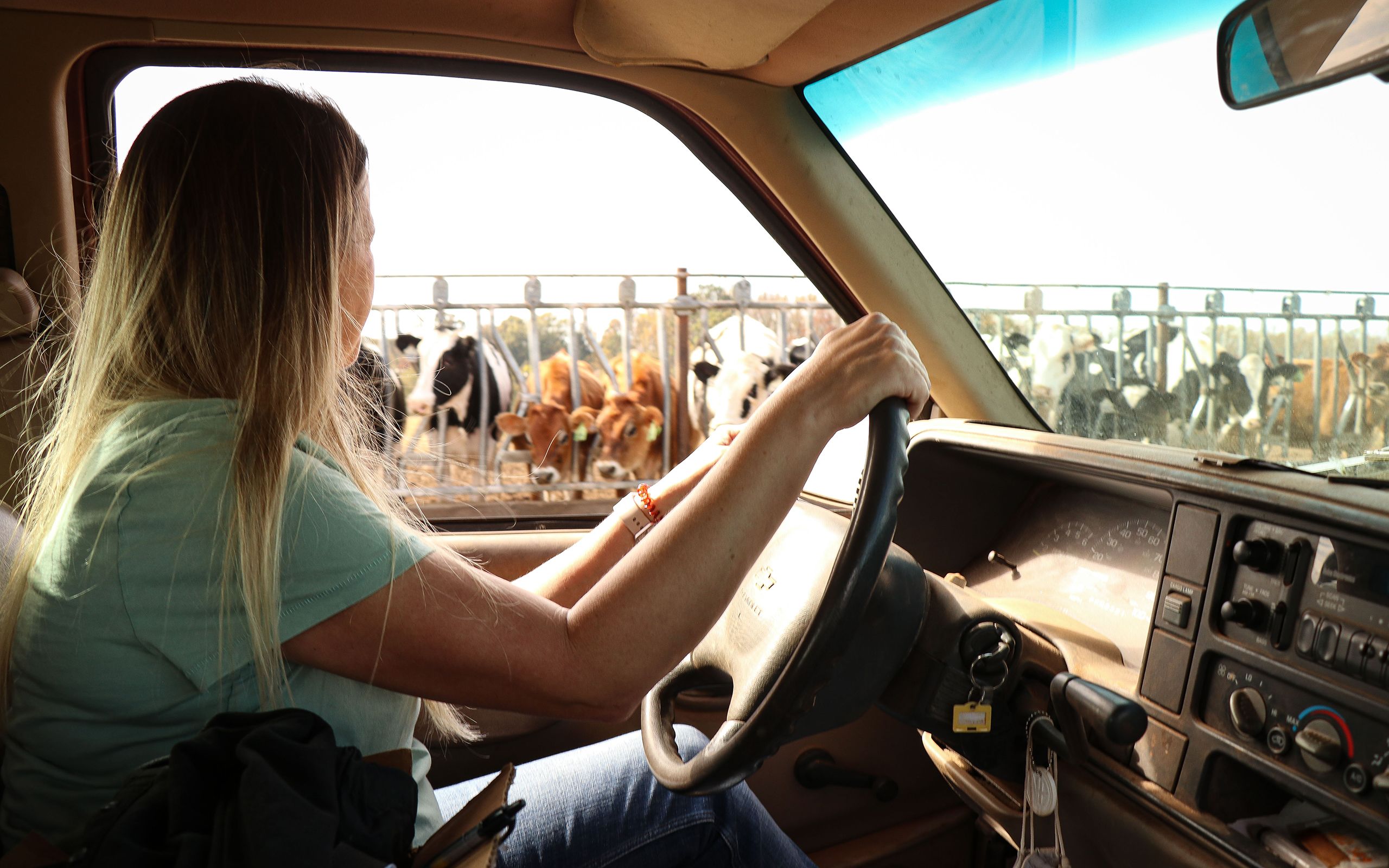
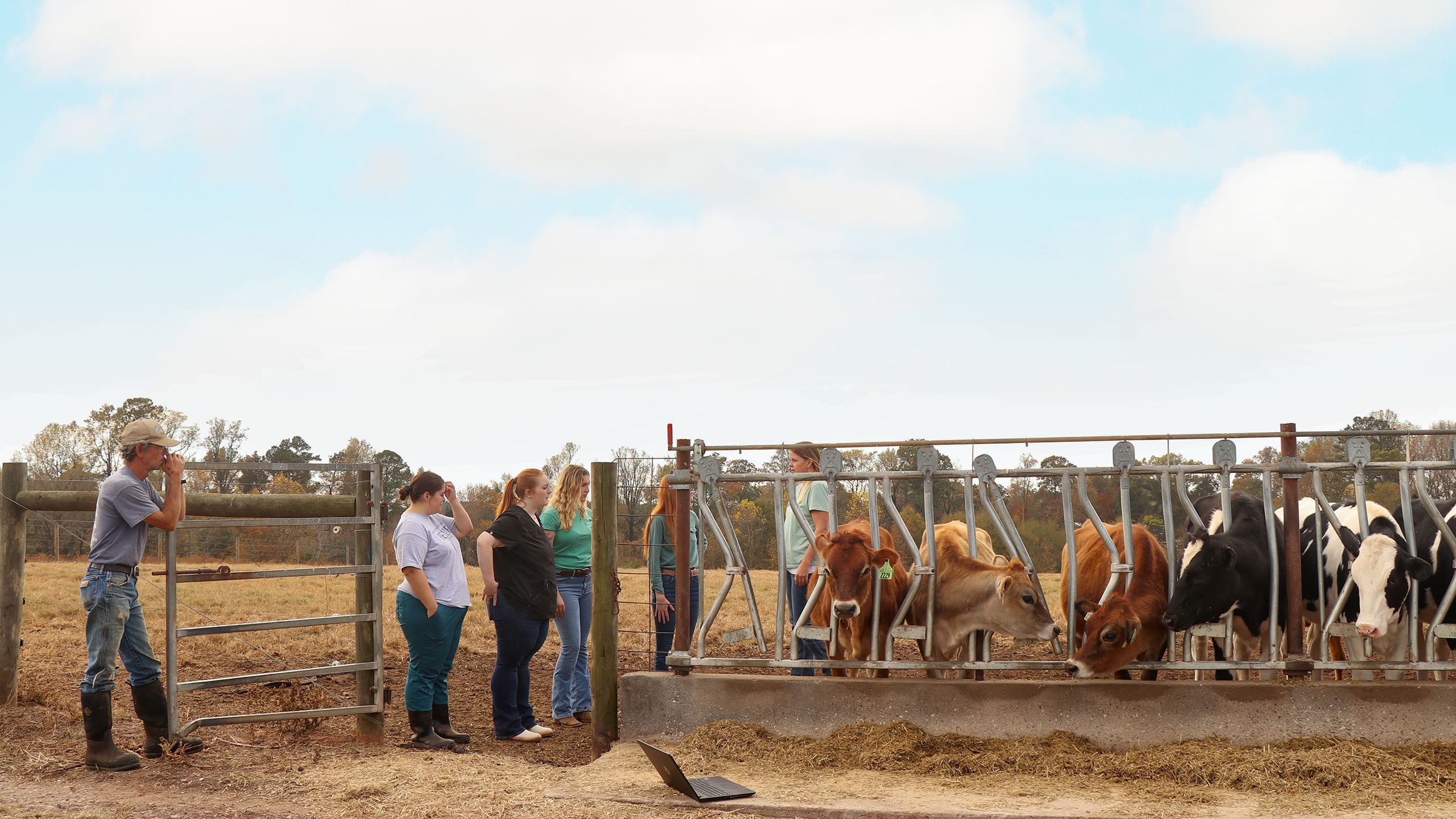
A two-breed approach
A decade ago, the Department of Animal and Dairy Science’s dairy herd was made up entirely of Holstein heifers. When Bohlen joined the faculty in 2013, she wanted to expand learning opportunities for College of Agricultural and Environmental Sciences (CAES) students.
That expansion happened through the generous donation of six 9-month-old Jersey cows from CAES alumnus C.A. Russell, a top-tier Jersey breeder based in Hilmar, California, and 1985 dairy science production graduate.
Bohlen reached out to Russell to request Jersey heifers to diversify UGA’s Holstein-heavy herd. “Being an alumnus, it was an easy yes,” Russell said in a 2021 interview.
The first thing the original JAMS students did was bestow names based on UGA themes and anthems on the newest members of the herd — Athens, Glory, Sanford, Archie, Herschel and, of course, Russell. That first group of high-quality stock produced nine generations of calves, including Woof, the last daughter of Glory — one of the original Jersey heifers gifted to CAES in 2014 — who Bohlen purchased when her breeding years were over.
“I wanted to provide her a nice retirement home,” Bohlen said.
Glory, the matriarch
Glory, the matriarch
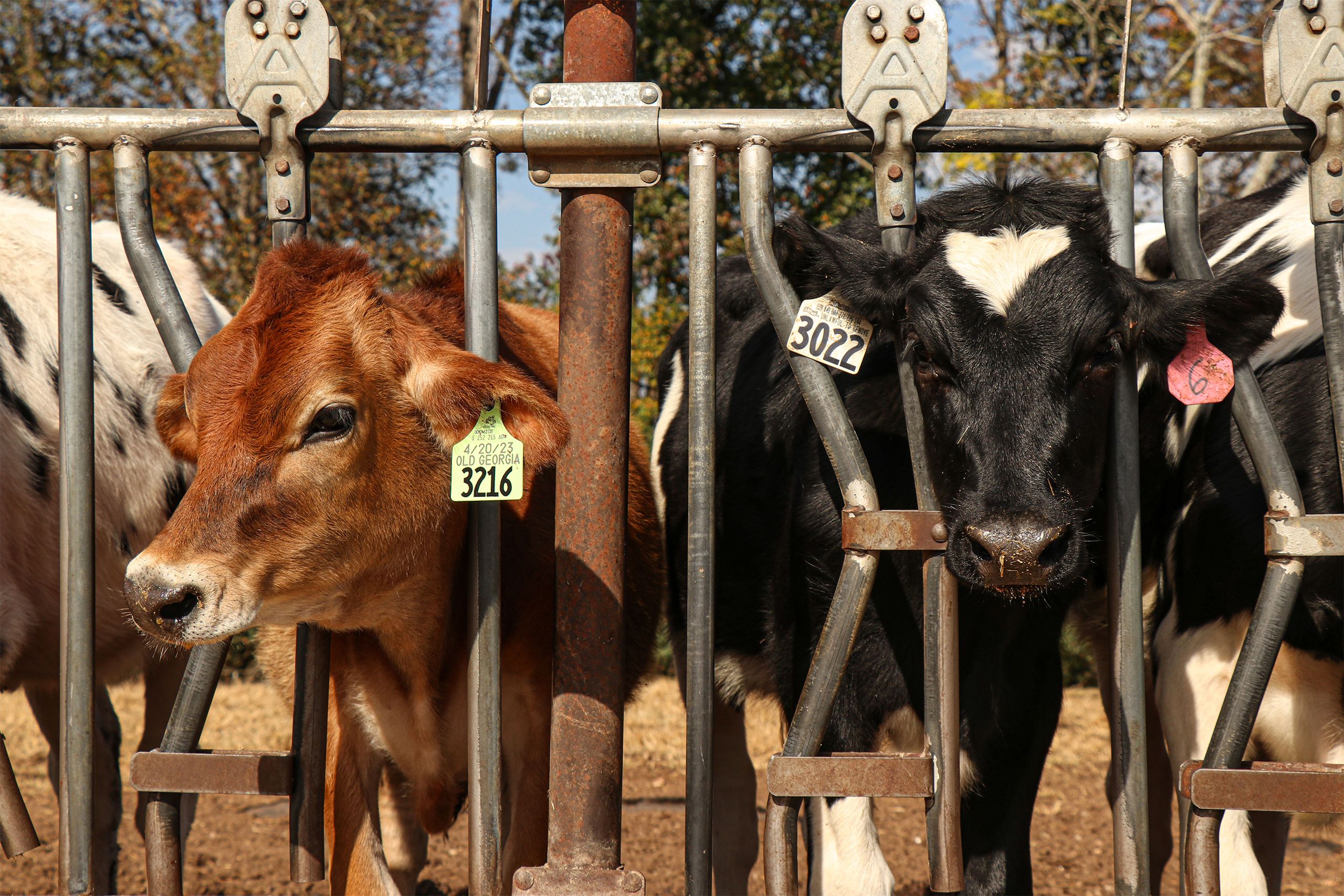
Jerseys in the South
In addition to the original naming lines, which help team members trace the genetics of each new heifer back to the original donation, each semester’s JAMS team chooses a different theme to name each generation of calves. Themes have included coffee, favorite places on the UGA campus, Athens, landmarks and flowers.
While she is admittedly partial to the caramel-hued ruminants with black noses and thickly lashed eyes, Bohlen said diversifying the herd was important for ongoing research to support the dairy industry in the region and the U.S.
“When you are looking to answer research questions, it is good to have a base breed, but you can answer different questions by having two breeds,” Bohlen said.
Holsteins are the most common dairy breed in the U.S., followed by Jerseys. Although it is the smallest breed of dairy cattle, studies have shown that Jerseys are more efficient in converting feed to milk, producing milk that is higher in fat and protein than Holsteins. However, Holsteins produce a greater average volume of milk.
“There are very few Jerseys in Georgia and Florida because dairy producers are interested in the volume of milk produced. The components of the milk are less valuable in this region, where we have fluid pricing,” said Bohlen. She added that Jersey cows are more common in the U.S. “cheese corridors,” where milk with a higher value of butterfat and protein is desirable.
However, Jersey cows tend to have a higher heat tolerance, higher rates of fertility, greater longevity and higher feed efficiency than Holsteins, producing more milk solids per pound of body weight and amount of feed consumed.
A Jersey heifer’s face is reflected in Bohlen’s laptop screen. RFID tags in the cows’ ears allow the students to easily track the genetic and health data of each animal.
A Jersey heifer’s face is reflected in Bohlen’s laptop screen. RFID tags in the cows’ ears allow the students to easily track the genetic and health data of each animal.
Breeding success
In the decade since the JAMS team was formed, UGA’s Jersey herd has grown to more than 40 milking cows and a nearly equal number of breeding heifers, both through additional heifers donated by Russell and the students’ very successful breeding program.
After careful evaluation of each year’s heifers, students match those chosen for breeding with available bulls through specialty suppliers who provide profiles on the genetic traits of each donor bull.
“The students pick all the bulls and which heifer they will breed them to. I’ve seen massive debates happen, but it is fun. They are teaching each other life skills by coming to agreements on breeding decisions, and they are growing more through the program because they feel ownership of the results,” Bohlen added.
UGA’s Jersey herd is one of the top-ranked college herds as determined by the American Jersey Cattle Association (AJCA) REAP — Registration, Equity, Appraisal, Performance — program. A few UGA animals have ranked in the top for the breed, Bohlen said.
Bohlen, from left, shares herd-related data with students Stewart, Smith and DuPont.
Bohlen, from left, shares herd-related data with students Stewart, Smith and DuPont.
Supporting dairy science
In 2023, the team nominated one of their homegrown Jersey heifers — named UGA Archie Ocoa — for the 66th Jersey National Heifer Sale and was accepted. The Jersey National Heifer Sale, run by the AJCA, directly benefits the association’s National Jersey Youth program, a mission close to the students’ hearts.
“In a complete moment of ‘pay it forward,’ they recognized that their experience would not be possible if the Russell family had not given it to them. They saw it as their duty to help make opportunities happen for others,” Bohlen said. “This is a perfect example of the experience, learning and ownership these students have taken on.”
Archie Ocoa sold as lot 28 in the sale to second-generation dairy farmer Bradley Taylor of Taylor Jersey Farm in Booneville, Mississippi. As the Southeastern board member for the AJCA, he knows that heifers accepted to the annual sale are rigorously screened. He briefly served on the board with Russell, who donated the first animals to the JAMS program.
“Any animal in that sale is at the higher end of genetics among the breed and is something you would want to add to your herd,” said Taylor, who has 220 registered Jersey cows in his herd. “This is the national sale for our convention and, if a heifer makes it into that sale, they are a product of high-end genetics.”
As a Jersey breeder himself, Taylor said supporting a program like JAMS at UGA is a benefit to the dairy industry.
“The fact that a Southern university is investing in the future of the Southern dairy industry and the Jersey breed is something I want to support,” he said, adding that the number of university dairy programs in the South has decreased since his parents started commercial dairy farming in 1966. “Jerseys are well adapted to the South, and as a board member for the American Jersey Cattle Association, I want to support what they are doing there.”
Student-powered initiative
Angela Reimert is a third-year animal science major who participated on the team in fall 2022. The experience was so influential that she added a dairy science minor to her degree plans.
“I was on the pre-veterinary track already, but this has caused me to lean more toward large animal medicine,” Reimert said. “This gave me a look into what I could be doing in the future. Genetics has always fascinated me, so it was great to get an introduction into that aspect of the agricultural industry and the dairy industry as an undergraduate. Being on the JAMS team gave me both class credit and hands-on practice in applied reproduction.”
Experiences with the JAMS team encouraged recent CAES alumnus Heidi Cashwell, who graduated with her bachelor’s degree in dairy science in December 2023, to pursue an advanced degree.
“Being able to look at the genetic data for these animals and decide which traits you want to continue on, or maybe traits that you want to limit in the future, was awesome. And when you breed that animal and you can see the improvements you make genetically, it’s really rewarding to see the progress you make with these animals,” Cashwell said.
On a clear fall day at the UGA Teaching Dairy, Du Pont and fellow JAMS students Bekah Stewart, Audrey Mixon and Kayleigh Smith spent the morning checking heifers for pregnancy, examining a group of unbred heifers for preferred physical traits and tagging young heifers.
“Genetics can only tell you so much,” Bohlen tells the students as they peruse the animals’ forms. “A priority is good feet and legs. Genetics don’t mean anything unless the animal can walk to the milking parlor.”
Smith, a sophomore, showed commercial heifers as a high school student and was so enthusiastic about the JAMS program, she contacted Bohlen to inquire about the program before she’d even graduated from high school. She is now an animal and dairy science major focusing on livestock production and management.
“I fell in love with it. Working on the farm, playing matchmaker for the heifers, learning about the industry, watching the cows grow from babies to breeding and even to retirement, the whole circle,” Smith said as she attached ear tags to several yearling heifers. “It’s been an amazing experience.”
Second-year animal and dairy science student Kayleigh Smith nuzzles Jersey and Holstein heifers.
Second-year animal and dairy science student Kayleigh Smith nuzzles Jersey and Holstein heifers.
Explore the JAMS family tree
News media may republish this story. A text version and art are available for download.
